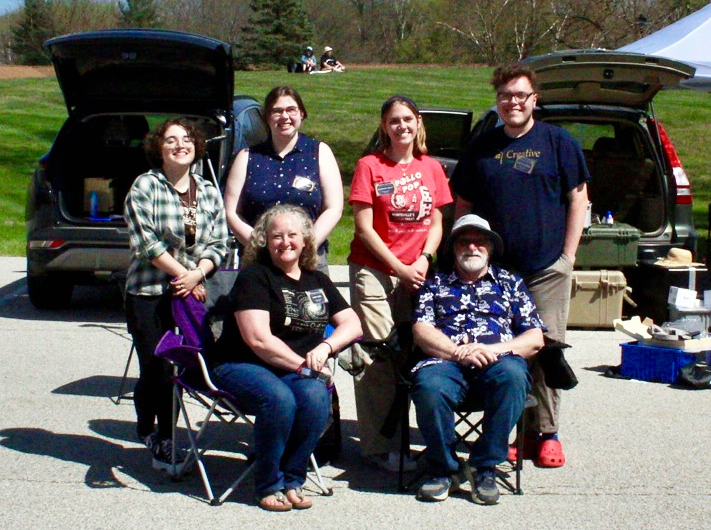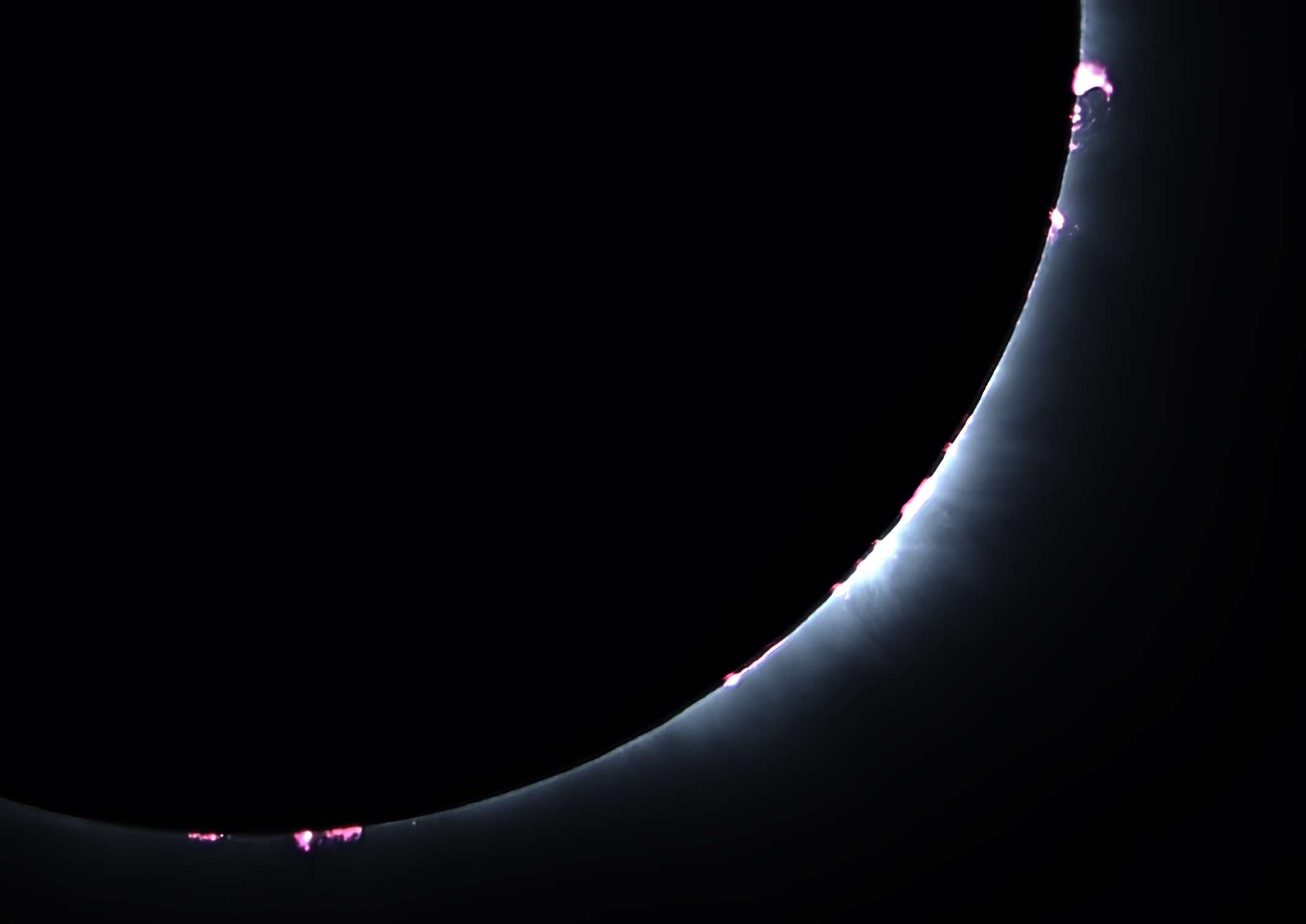News
Tennessee Tech students capture total solar eclipse in Indiana

In back, from left, Tech students Evelyn Brachey, Lily Ledford, Mackenzie Henley and
Aaron Livesay, and in front, Mary Kidd, associate professor of physics at Tech, and
Steve Robinson, professor of physics, prepare to take photos at the recent eclipse.
Four Tennessee Tech University students and two faculty members recently experienced
an event for which they had been preparing all semester. Lily Ledford, civil engineering
major; Aaron Livesay, chemical engineering major; Evelyn Brachey; double major in
microbiology and geology; and Mackenzie Henley, mechanical engineering major; embarked
on a two-day journey with their professors to Indiana to be in the path of totality
for the April 8 eclipse.
The trip was the grand finale to the special topics course, Imaging the Total Solar
Eclipse, taught by Steve Robinson, professor of physics, and Mary Kidd, associate
professor of physics.
“It was actually our experience with the 2017 eclipse in Cookeville that set off our
interest in astrophotography and imaging,” said Kidd. “Following that eclipse, we
offered an Honors Colloquium on astrophotography, which Steve Robinson then developed
into our Observational Astronomy course (ASTR 3100), offered every fall. It also served
as the impetus to establish an astronomy minor program in 2019.”
The department is also now in the final stages of planning for a permanent observation
platform at Tech’s Oakley Farm with support the of alums Gene and Jo Palmer.
The students and faculty of this semester’s special topics course chose to view this
year’s eclipse – the last one in the United States for the next 20 years – at Indiana
University Bloomington to be part of that university’s Solar Eclipse Workshop at their
Multidisciplinary Engineering & Sciences Hall. The trip was funded by the Tennessee
Space Grant Consortium.
"It was rated one of the top 10 places to witness the eclipse. The only other cities
rated higher were in Texas and Mexico," said Livesay.
Before embarking on their journey, Ledford, Livesay, Brachey and Henley spent the
semester learning everything they would need to know in order to take professional
photos of this astrological event. They also researched exactly what they could expect
to see when the moon completely covered the sun.
They learned about a phenomenon called Baily’s Beads, named after English astronomer
Francis Baily. These are produced when the moon covers the sun during a total eclipse
and sunlight passes through the rugged terrain of the lunar surface, creating what
looks like beads of light along the edges.
They also studied prominences, which appear as fiery loops or arcs emanating from
the sun during an eclipse, as well as Coronal Mass Ejections, which are clouds of
magnetized plasma. They wanted to be able to take photos of each of these during the
less than five minutes that it took for the eclipse to occur on April 8.
One of the student photos taken during the recent eclipse, which displays two phenomena
students had researched before the event: prominences and Baily’s Beads.
“You only get one shot, so it takes a lot of preparation to be ready to photograph
an eclipse,” Robinson said. “In the class, the students learned about what they would
be seeing and what it would take to capture good images of the different aspects.
This involved understanding the operation of telescopes, mounts and dedicated cameras,
as well as becoming familiar with the software used to control them. As much time
as possible was spent practicing with the equipment itself. We were also sure to emphasize
that, as well as operating the equipment, they should take some time to appreciate
the spectacle for themselves."
In the final days of the spring semester, the students gave a presentation explaining
their research and preparation and showed some of their resulting images. They’d managed
to get photos of everything they had hoped to capture. Robinson also shared a candid
video of the four students he’d set up to record during the eclipse that captured
everyone’s joy and wonder when the moon completely blocked out the sun.
“One of the big challenges was that you practice, and you practice, and you practice,
but you cannot practice at that time scale. When stuff happens so quickly, you’ve
got to be ready. The other challenge is keeping calm when all of this is happening,”
said Robinson with a chuckle.
Students and faculty are still processing all the images they took during the event
– some of the cameras were shooting 20 frames per second – but they have posted some
of their work at: https://sites.tntech.edu/eclipse-2024/.
Those interested in making a gift to help with the construction of the permanent viewing
space for astronomy classes can do so at: https://www.tntech.edu/univadv/giving/online-giving.php.

